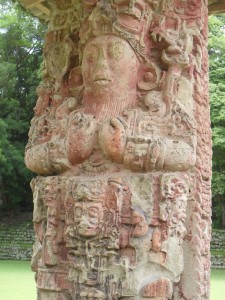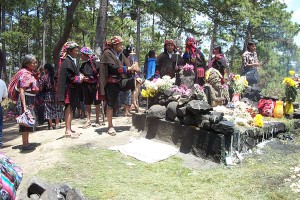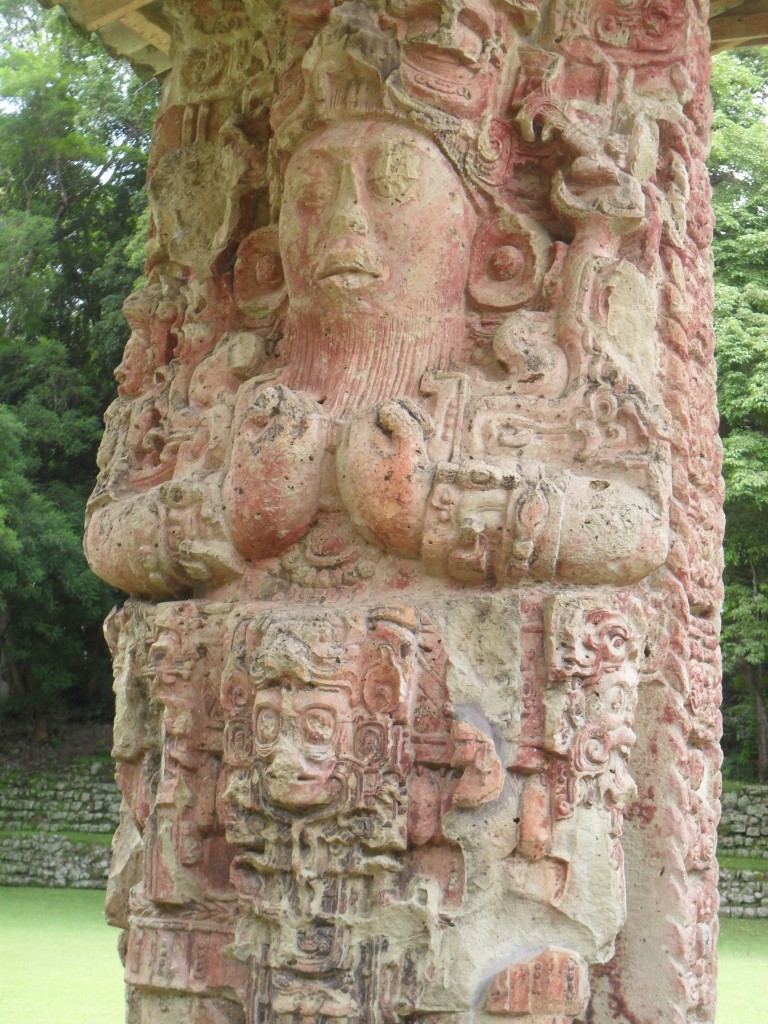 What role can filmed documentation play in ensuring the living lineages of the Maya tradition remain vital? The tradition of the Maya has persevered for millennia through lineages of transmission that have endured conquest, colonization, war, globalization, evangelization and countless other, continued threats. We are in a moment in which Elders and Cofrades (traditional community leadership group) are open to share their wisdom and their vision with the world, willing to leave a filmed record to spread and preserve their culture.
What role can filmed documentation play in ensuring the living lineages of the Maya tradition remain vital? The tradition of the Maya has persevered for millennia through lineages of transmission that have endured conquest, colonization, war, globalization, evangelization and countless other, continued threats. We are in a moment in which Elders and Cofrades (traditional community leadership group) are open to share their wisdom and their vision with the world, willing to leave a filmed record to spread and preserve their culture.
We have the great opportunity of beginning this preservation project with the Elders Don Mariano, who is an expert calendarist and knowledgable of Maya epigraphy, Don Tomás who is a wise elder and part of the Indigenous mayorship of Chichicastenango, Don Manuel who a Cofrade member from the Cofradía of Chichicastenango and Don Juan Manuel from the Cofradía of the Ri Laj Mam (Maximon) of Santa Cruz in Santiago Atitlan. They are all willing to share about the tradition and their wisdom of their Maya cosmovision. Some of the knowledge they will be sharing with us includes Wach (Maya Writing) and the Cofradías.
Wach…Maya Writing of the New Dawn
For centuries after western civilization came to know the Maya civilization there was no idea about the meaning of Maya writing. It was not until the middle of the last century that Knorosov, a Russian scholar, made the first attempt and discovered that the Mayan glyphs were ideograms.
 Maya grandfathers and grandmothers say that Maya writing is a living writing which they call Wach – this could be translated as “the eye in which a vision is found.” When you are in contact with this vision, it sees you and transmits ideas. For this reason, Maya writing is difficult to understand.
Maya grandfathers and grandmothers say that Maya writing is a living writing which they call Wach – this could be translated as “the eye in which a vision is found.” When you are in contact with this vision, it sees you and transmits ideas. For this reason, Maya writing is difficult to understand.
There have been many advances in understanding Maya mathematics and astronomy, mostly through the codices. However, there has not been much progress regarding the interpretation of the so-called glyphs. Two elders, Don Tomás, who inherited the knowledge of understanding the glyphs and who has an interpreter, Don Manuel, who can help him share this knowledge in Spanish. Don Tomás is an old man who is willing to leave his knowledge on record, it is therefore important to film him. Then there is a wise Maya scholar, Don Mariano, who is also an Ajq’ij (Maya spiritual guide), and may be one of the few calendarists who has deeply maintained the tradition. He is an heir and scholar of Maya writing, also willing to share his vision, which just like Don Tomás’, differs from the western academic understanding. The valuable vision and objective of Don Mariano is to make Wach understandable for any person.
The problem that both Don Mariano and Don Tomás see is that Western culture is trying to understand Maya writing based on the grammar taught at school. None of the scholars has learned a traditional Maya language. They have mainly adjusted to the contemporary understanding, without taking into account that today’s Maya language is different from pre-Columbian Maya language.
The Cofradia (Brotherhood), Shelter of Maya Spirituality
After the invasion and persecution from the Spaniards, especially from the inquisitor priests that came with the conquerors, there was a persecution and extermination of the spiritual guides of the Maya tradition.
Catholic priests brought the structure of the church through the Cofradias, which they had inherited from Arabia.

This structure came to Maya spiritual guides as the perfect way out of the persecution. The Cofradias allowed them to take the image of a saint to a member’s house, which served as the domicile through which their organization revolved. This was accepted by the priests, who thought the Mayas were being converted to Catholicism. It was also a source of income to the church, since the Cofradias had to pay donations and collect charity. The Confradias are composed of the Mayor or Council Ruler, scribes, principals and assistant Cofrades. They were the perfect shelter that kept the hierarchical order of what was left of the Maya royalty and the spiritual guides, or Ajq’ij.
For centuries the essence of Maya tradition and spirituality was preserved in the Cofradias. Until recently, Maya spirituality was persecuted and treated as sorcery. It was only in the mid 90’s that there was more receptiveness to the living Maya culture. It was then that the Great Circle of Elders started to spread the knowledge and make public Maya ceremonies that attracted the interest of the western world. During that time the President of Guatemala, Ramiro De León Carpio participated in a traditional Maya fire Ceremony, which was broadcast by the media. This brought respect and the freedom to publicly practice our tradition.
The Cofradia was the shelter that helped protect Maya spirituality for several centuries, but when the persecution was over and we could publicly practice our spirituality, the Cofradias attracted less people. For this reason it will most likely be lost. However, the Cofradía of the native saint of America, Ri Laj Mam (also known as Maximon), might be the only one to be persevere as it does not follow the church. Both its origins and essence form part of the spiritual organization of Maya Elders.
We believe it is important to make a filmed record of this institution, to preserve the secrets that were kept there up until today, and to understand the way in which a connection was made between Maya deities and the Catholic saints. It is also important to leave a record about the Cofradia of the Ri Laj Mam, its importance and value for Maya people. This is the first time that we will have the opportunity to have the Cofrades talk directly to us, without any intermediaries, about their vision.
Saq’ Be’ works to keep the living lineages of the Maya vital. To this end, we have raised funding to support the first of a series of filmed documentation efforts. An edit of this filming will be made available publicly, while a more complete version will be made available as an archive to Maya communities. This work is only possible through the financial support of readers like you. Please consider making a tax-exempt donation to Saq’ Be’, either online or contact us to discuss other means. Thank you for helping us to support the continued vibrancy of these rich and important traditions!
- 6 Kan ~ Today’s Ch’umil - June 27, 2020
- 5 K’at ~ Today’s Ch’umil - June 26, 2020
- 3 Iq’ ~ Today’s Ch’umil - June 24, 2020


Dear Carlos,
I just finished the following version of the Popol Vuh: 1950 version Goetz, Delia; Morley, Sylvanus Griswold (ed.). Popol Vuh: The Sacred Book of the Ancient Quiché Maya By Adrián Recinos (1st ed.). Norman: University of Oklahoma Press.
I was thinking that there are a lot of spaces or jumps between sections that I thought may be related to the ideogrammatic concept that you refer to above in the Wach section. In other words, it was like listening to a piece of music with only some of the notes being heard, or a sculpture or painting or a live performance that was somehow only partially seen or heard. So, it was as if I didn’t get the full experience. First, I thought it was just the immediate translation, but upon deeper reflection, I began to realize that maybe it was the essence of the Popol Voh was being lost through a standard Western language translation and concepts rather than the concepts and language of the Quiché (or is it K’iche’?). Anyway, we are looking forward to our trip this January and becoming more aware of Wach and the other elements that comprise the Maya tradition and spirituality. Jim Jenner and also on behalf of Brenda Lynn Bynum